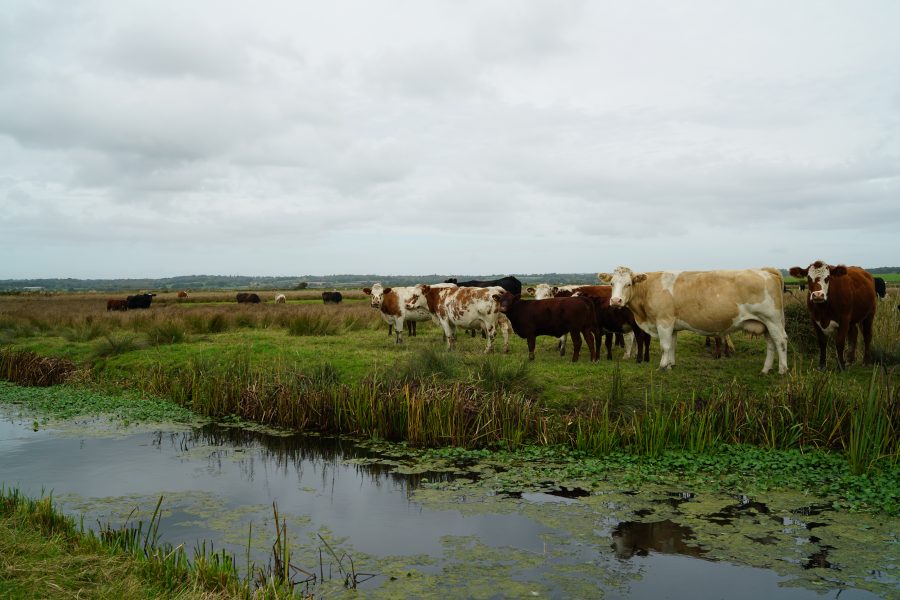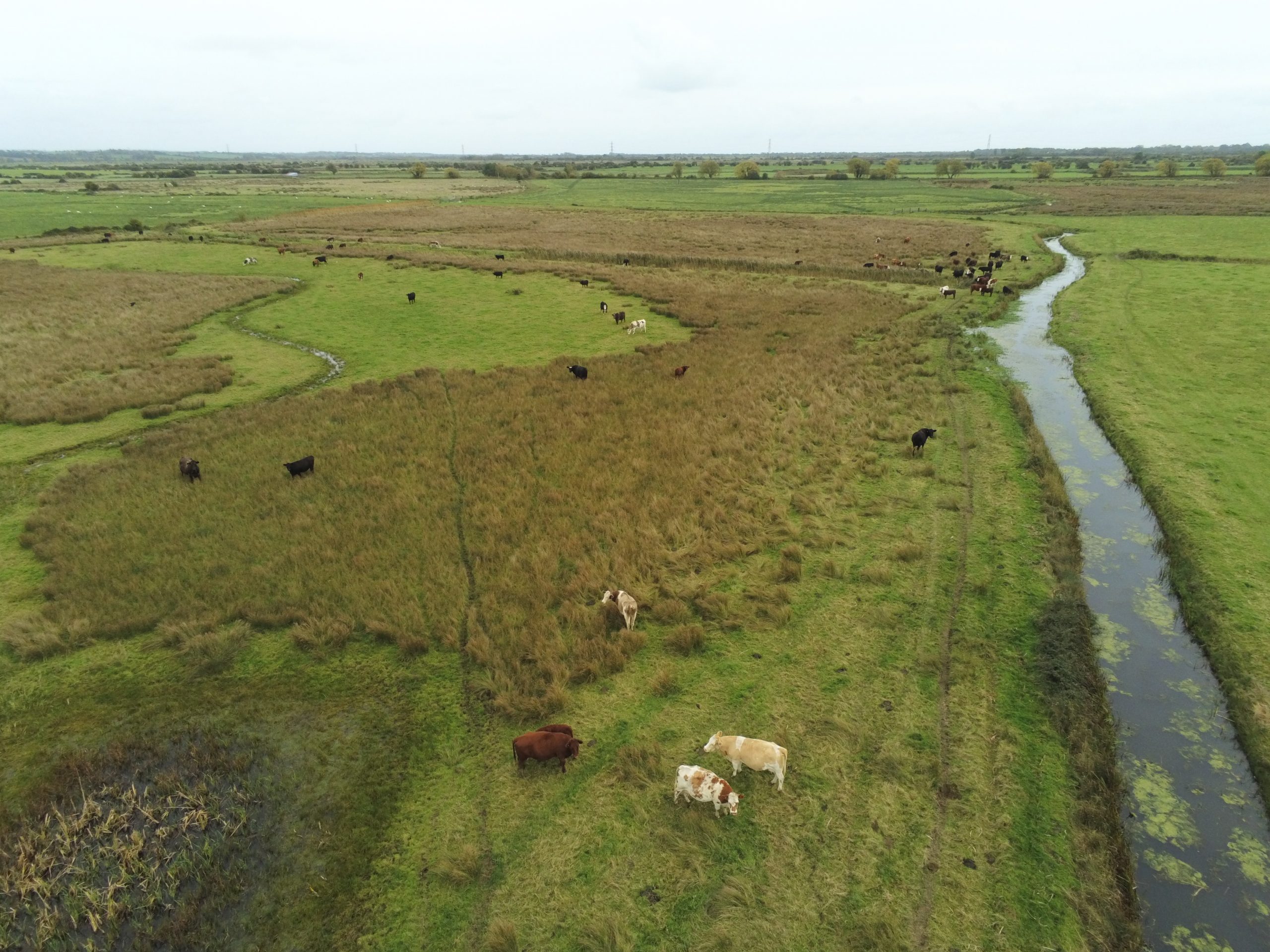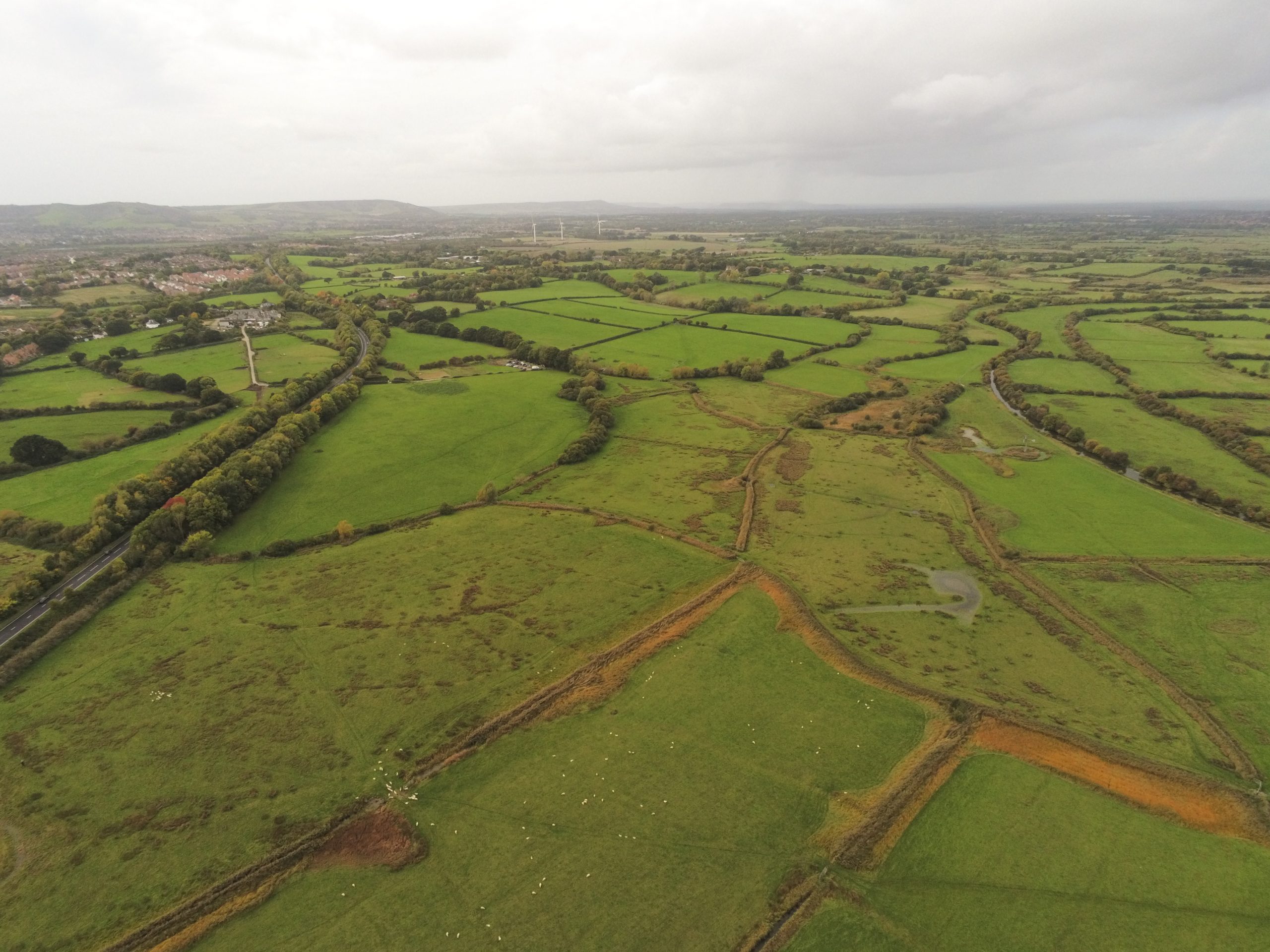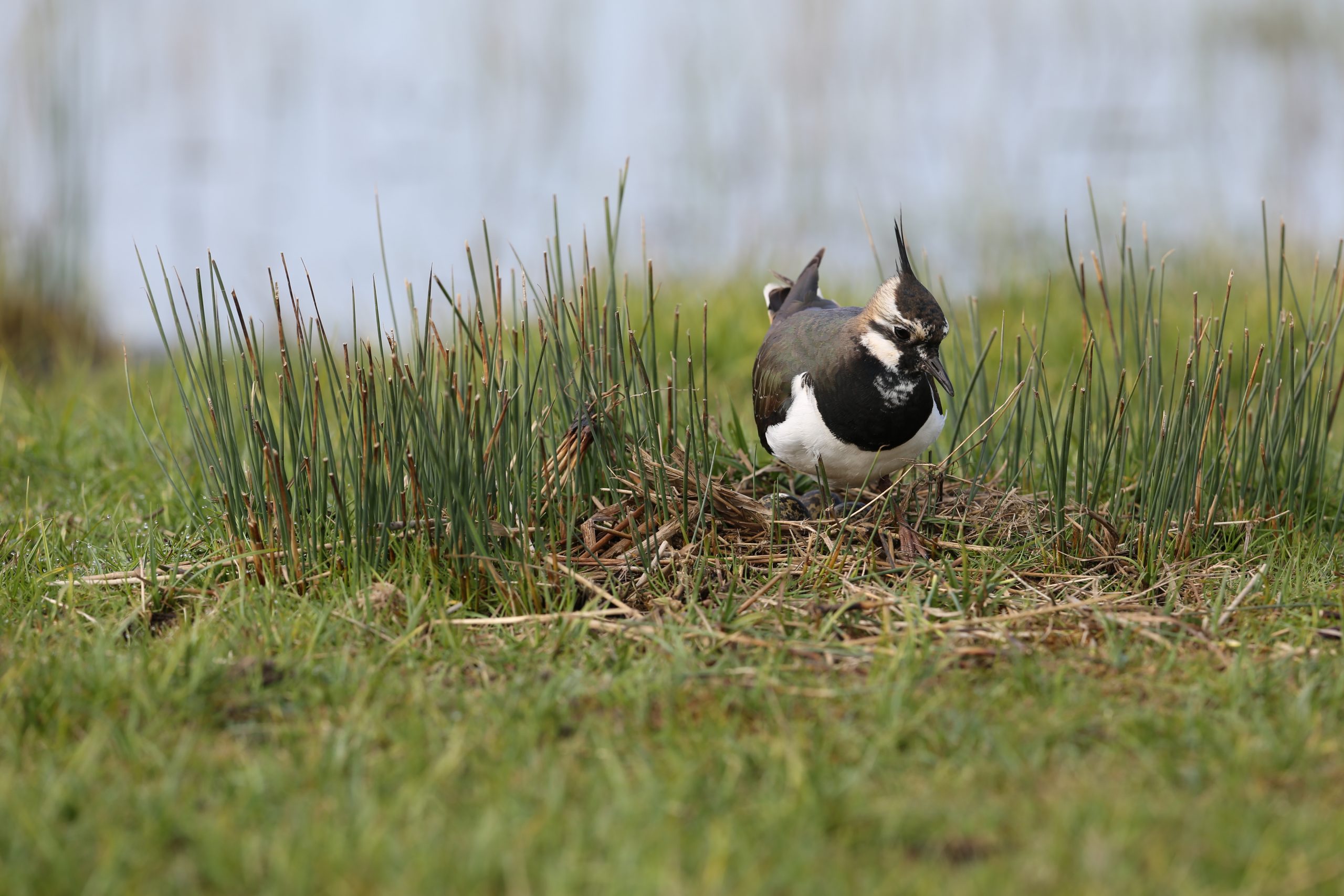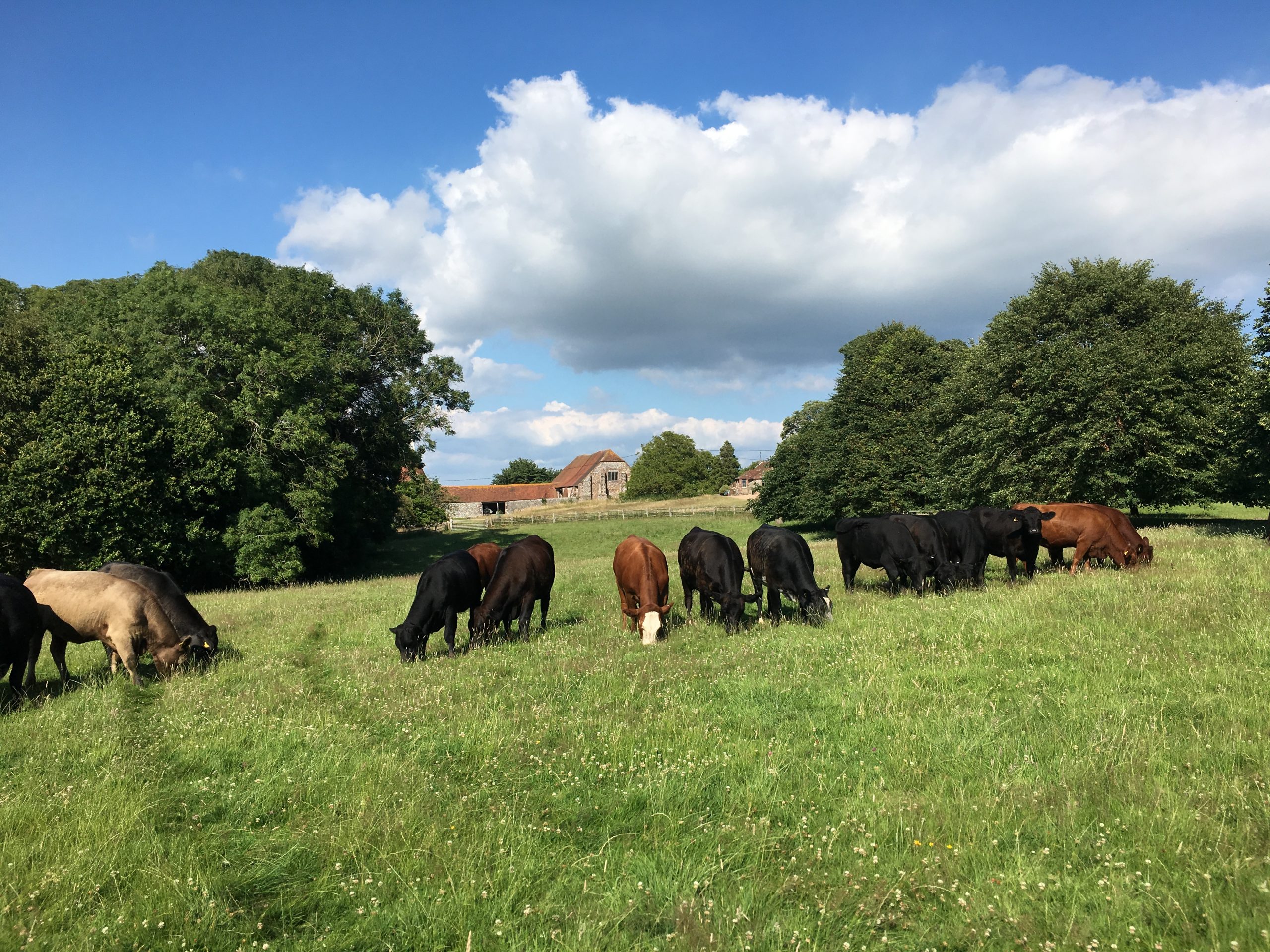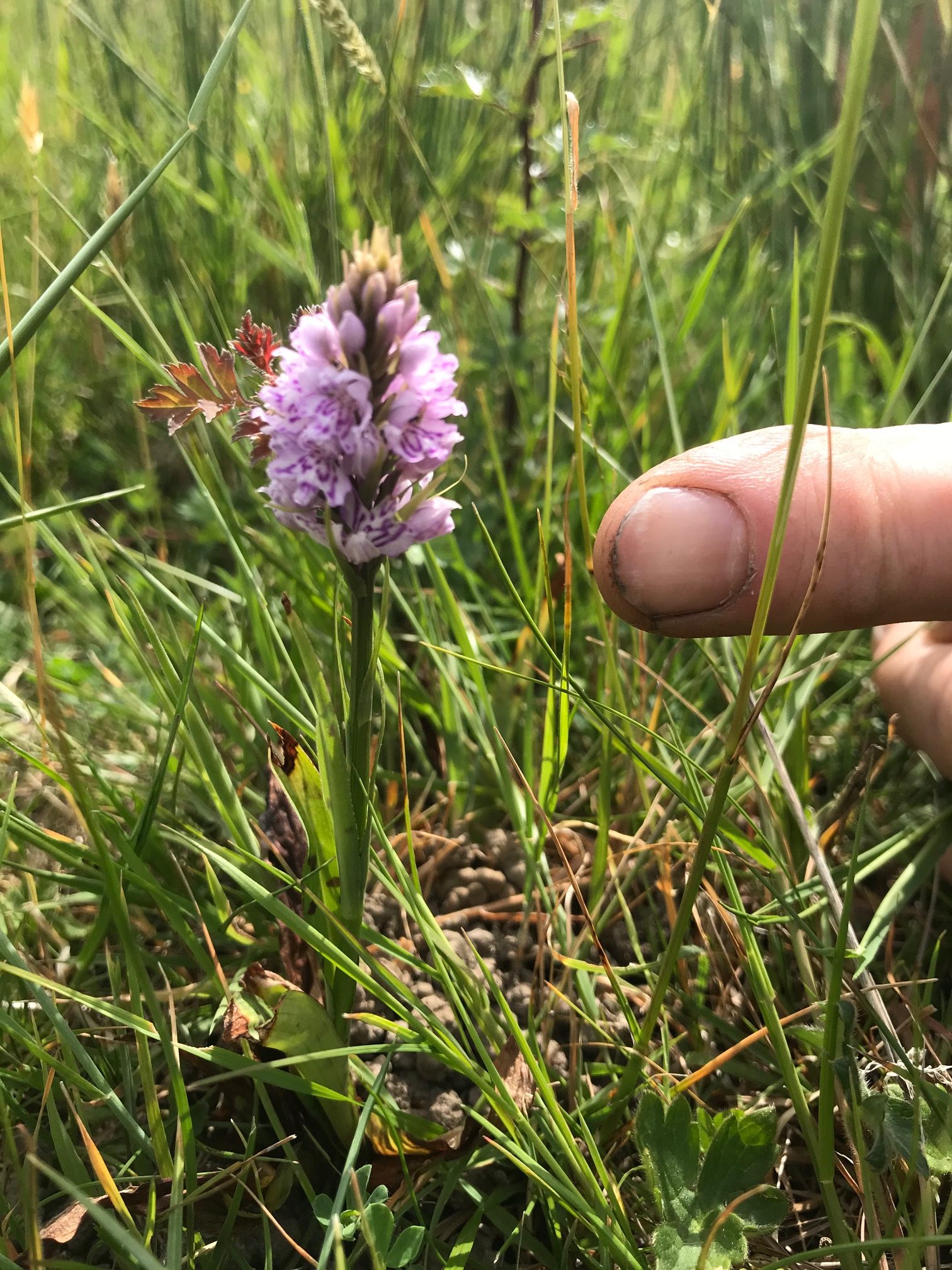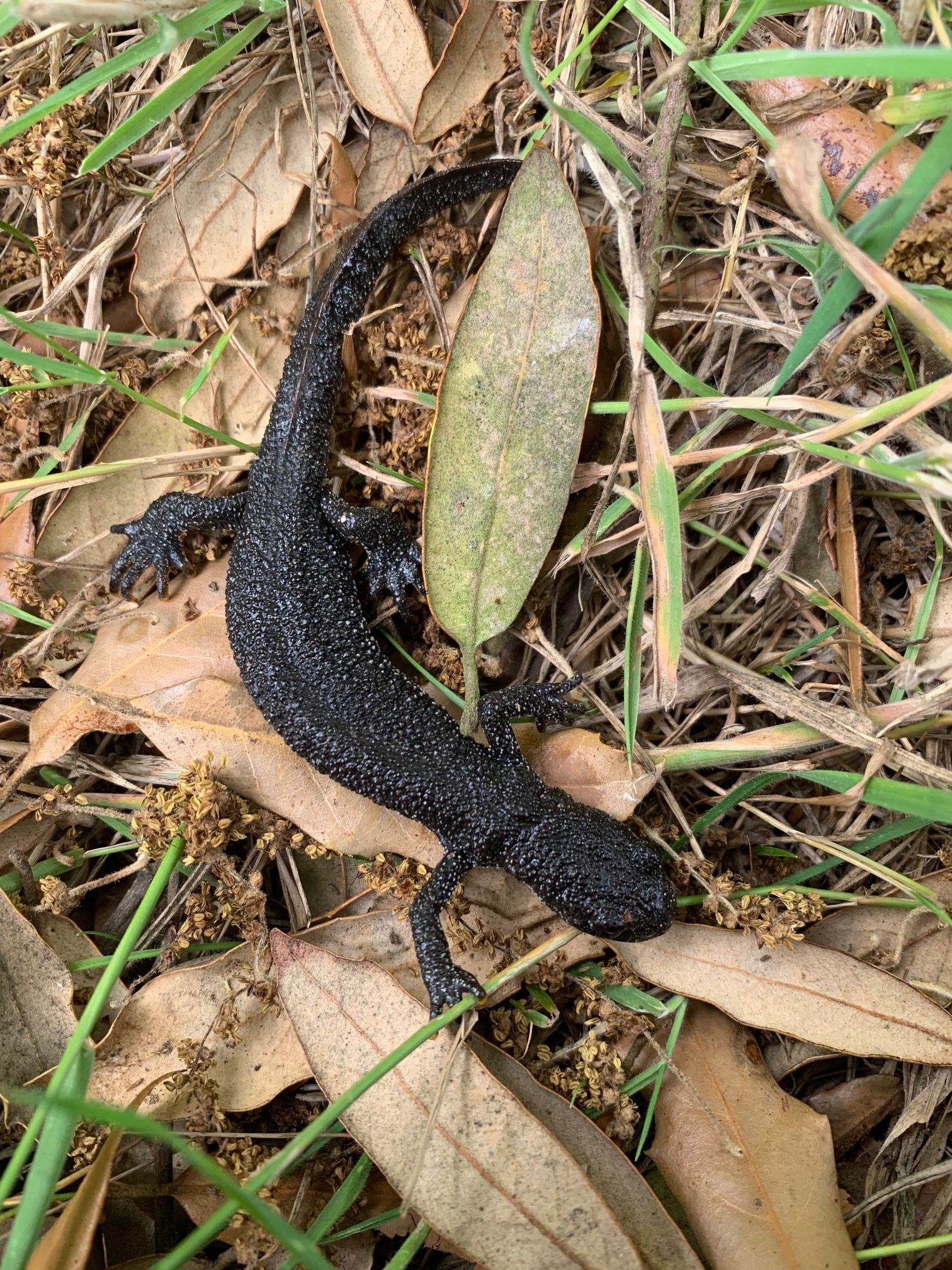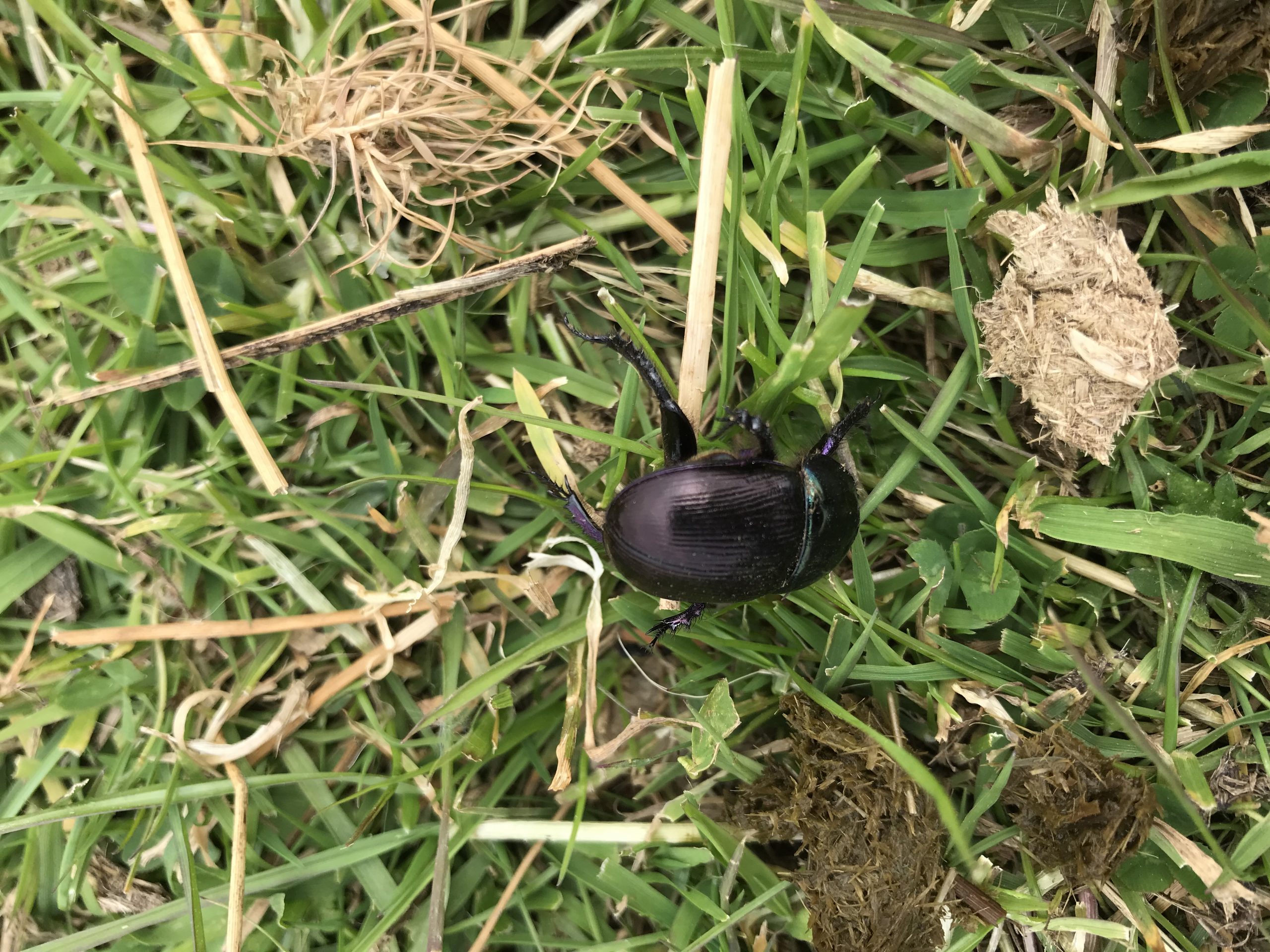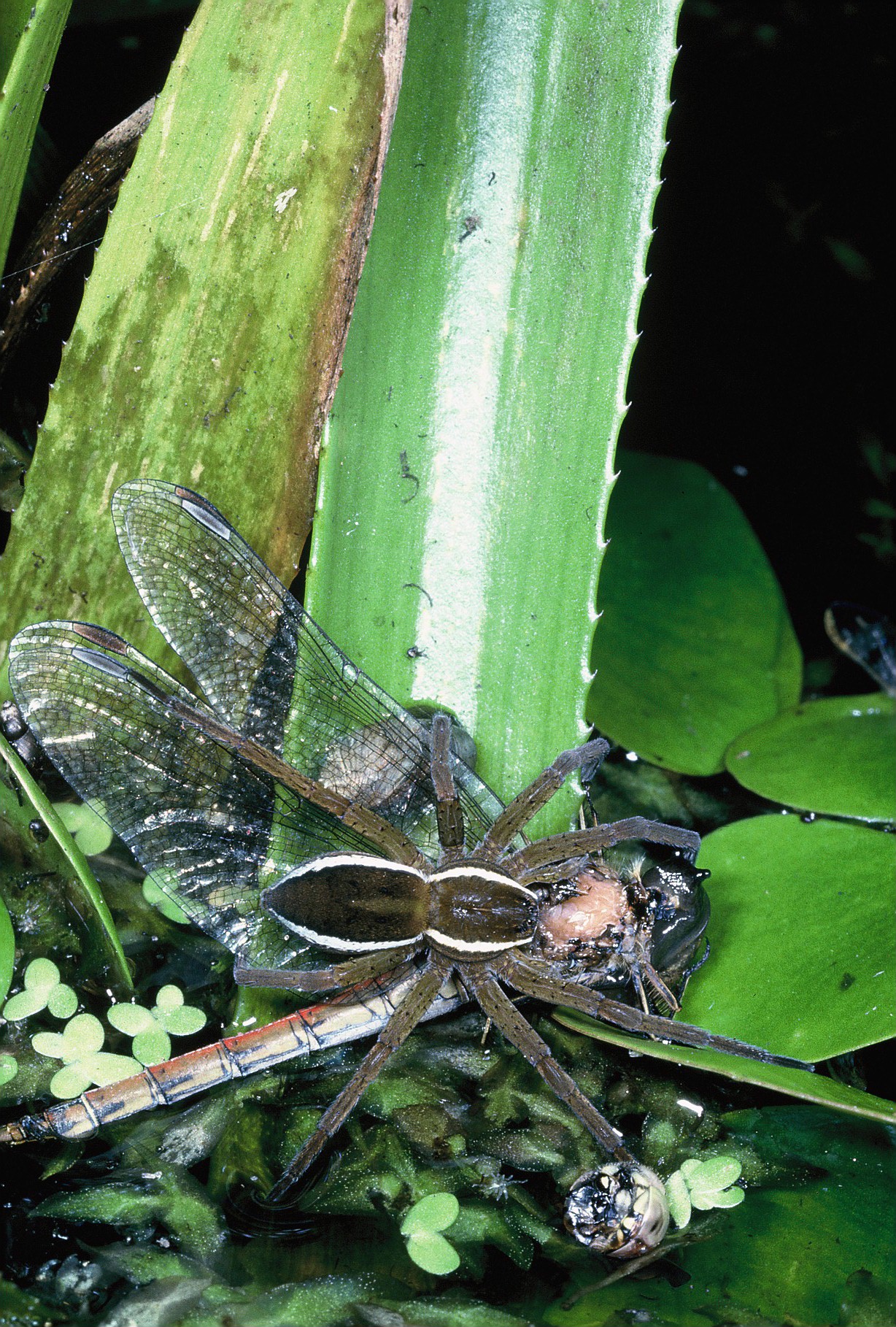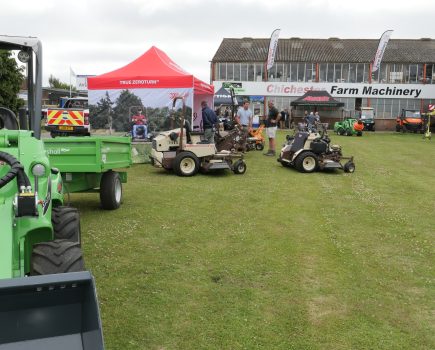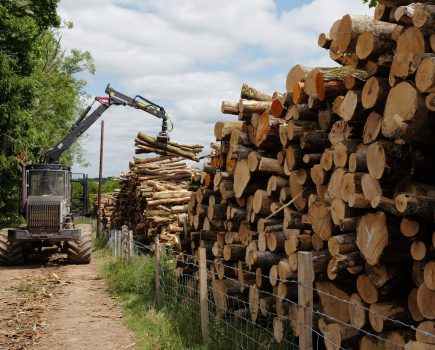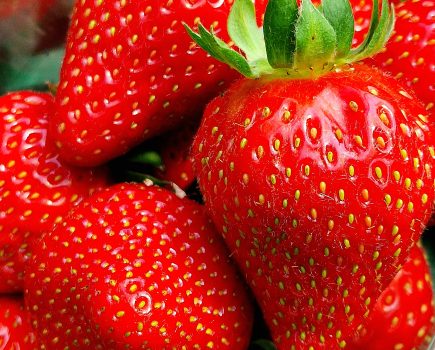This month Nigel Akehurst visits Montague Farm, a family-run, 700-acre farm and haven for wildlife and low-input livestock based in Hankham on the western edge of the 10,000-acre SSSI Pevensey Levels. Nigel caught up with farmer and naturalist Martin Hole to learn more about his landscape-based approach to farming and why he set up the Pevensey Farmers Cluster Group.
Arriving at Montague farm, I drive up the tree-lined road and park up in their old traditional farmyard. Walking through the well-preserved cluster of 18th century farm buildings and courtyards, it’s like I’ve stepped back in time. Situated on a hill at the western edge of the Pevensey Levels, the farm enjoys spectacular views across the marshes to the sea beyond.
I find my way to the farm kitchen, where I meet Martin Hole and his wife Gundrada (along with various friends and family members). After a quick coffee we head out on a tour of the farm. As we leave the farmyard in his Land Rover, Martin stops to point out their boundaries in the distance.
“The Pevensey Haven (river) is one of our boundaries and the Pevensey bypass is another,” he said, adding: “Though that is not how a bird sees things.”
Over the past 30 years the family has been fortunate to rent, then buy, adjoining bits of land on the Levels to create a heartland of about 500 acres. A neighbouring block of around 175 acres at Horse Eye (also on the Levels), was rented in 1999, flooded and returned to permanent grass, before being purchased three years ago. “Wader country,” said Martin.
The economy of the farm has been about nature conservation and running very low input livestock; a closed Romney flock of 550 ewes and suckler herd of 60 cows. It’s an organic, grass only system, with profit hard earned from minimal cost, medium output and high quality, premium markets.
All lambs are sold fat to local butchers, and Montague Farm has long-cherished relationships with Natural Farms at Bodiam, Heath and Son in Eastbourne, Holly Farm and Jacobs Ladder. Typically, 25 to 30 are taken to Tottingworth every fortnight. Martin reflects on the importance not just of his local customers but of the essential presence of the local slaughterhouse.
Cattle are mostly sold fat around 24 months, or sooner, and in recent years have gone to ABP to get their organic premium. If a good offer appears, some may go as stores to local farmers.
As we descend a steep farm track, he explains that the top ground of around 200 acres, with its woods and hedges, is the “engine room” for fattening stock and is used for lambing in the spring and for silage making.
The 500 acres of grazing marsh are part of the Pevensey Levels SSSI and is “where we really focus on the wildlife” added Martin. With the financial support of Natural England, he has spent the past three decades recreating a “powerful naturalness”.
Where previously there were flat fields of dry grass and linear ditches, there is now a kaleidoscope of varied wetland habitats. These range from herb-rich pastures surrounded by scrub and trees (wood pasture) to more open areas of wet grassland, “the big skies beloved of our lapwings” containing large scrapes and reed beds.
“This landscape is powered by the intricate play of water and livestock,” said Martin. As well as digging clumps of scrapes and ponds (everywhere) and new ditches, he has raised the water levels on his land, restoring sluices, syphons and ditch networks, even using a wind pump, keeping the ground wet all year round. “Sheets of water in winter bring in winter flocks of snipe, teal, lapwing and many others, and the receding water-line holds opportunity for the nesting birds as well as floristic and insect diversity ,” Martin added.
We drive to the south eastern boundary of the farm and drive up onto a hillock, built with the spoil from a pond Martin dug, next to a footpath. From this elevated position we look out across a 100-acre block of wet fen grassland and reed bed.
“You are looking at 12 fields in this aggregation and they are still fields, as the ditches are still kept as field boundaries, but you don’t see fields anymore. It’s one big landscape. All connected,” he said.
To the untrained eye it might not look like a productive farm, but after seeing the abundance of birdlife and learning about the diverse mixture of flora and fauna, it’s hard not to be won over by this tapestry.
“It’s the landscape of the future,” said Martin, pointing out a group of 300 fattening lambs which are half hidden by the reeds stirring in the breeze.
“We’re not turning the clock back, we’re harnessing really interesting ideas from other nature reserves. We’re speaking to naturalists. We’re constantly speaking to farmers who are on this journey and constantly trying to do it better,” he said.
Martin clearly loves this landscape, but it also makes financial sense, he said. The Countryside Stewardship income he receives from the nesting wader payments is fundamental and comes not by fighting nature by harnessing its processes.
Pevensey Farmers Cluster Group
Learning more about Martin’s background (he spent six years working for Philip Merricks helping set up the National Nature Reserve at Elmley in North Kent) it’s easy to understand why nature conservation is at the heart of everything he does here.
Despite his best efforts and an impressive list of over 220 recorded bird species at Montague Farm, numbers of nesting lapwing are down 80%, with fewer than a dozen pairs left on the Levels. “This is a battle worth fighting,” said Martin, “But it cannot be won without tapping into the much bigger area and a greater number of sites.
“We’re only 5% of the Levels and one small hotspot for breeding birds. Along with a few other farmers and landowners and the National Nature Reserves we need to build what a bird will look down upon as an archipelago of wetlands,” he said. “Nothing less will work”
To help raise more awareness and build this scale, Martin set up the Pevensey Farmers Cluster group in 2018, receiving Countryside Stewardship funding to bring together a diverse community of over 100 farmers and landowners who manage the landscape with traditional low-input sheep and cattle.
The group, which is free to join if you are a farmer on the Levels, has over 60 members, and activities to date have included regular lectures held at the farm by a number of expert speakers on topics ranging from predator control to carbon markets. The group has also visited some interesting projects such as Knepp in West Sussex and Elmley Nature Reserve in Kent.
In addition to the farmer interface, the Pevensey Farmers are also trying to get a better handle on the species present on the site and on population trends. While numbers of nesting birds are a target, water vole recovery is another. “Remoti” mink traps, overseen by the Countryside Restoration Trust and Professor Tony Martin, are spread over the 10,000 acres of the Levels and organised through the group.
Echoing the call of many ecologists, Martin is keen to see land managed to put ‘food for nature’ back into the countryside, as well as producing food for people. The food pyramid, in which creatures such as the water vole form a base, is sound architecture in landscape design, he said, with the myriad creatures existing to strengthen the web of life.
“I am happy to claim that the Pevensey Levels are the most bio-diverse wetland in the UK,” he asserted with a gleam in his eye.
Farmers can be the real heroes of this landscape, he said, helping safeguard the ditches and patches of water that are “just teeming with quiet fun”. They also bring the livestock, crucial to the grazed patchwork of grasslands, and a community to this land.
Over the next three years Martin is keen to encourage more farmers in the group to explore different approaches to land management, providing more opportunities for wildlife, as he has done at Montague Farm. He wants to see more hotspots in the landscape, which he believes will help reverse the decline in bird populations and create an even more beautiful and inspiring place, with farmers and wildlife at its core.
Reducing wormers and growing dung beetles
Another topic that Martin is passionate about is reducing the use of wormers and fly treatments, something he has worked hard at with the help of Nick Pile from Cliffe Vets. Ewes are shorn twice and receive no wormers or fly treatment (unless they find liver fluke), while cattle are similarly not treated, ideally until they are housed.
For lambs, they take faecal egg counts and push them to get bigger drench intervals. So far the lamb crop has been wormed three times this year, he said, when traditionally they might have been drenched seven times by now.
“We have weaned ourselves off all routine drenching,” he said, highlighting the catastrophic loss of insects in the countryside and resistance problems, while admitting that this approach does carry greater risk.
He also points to the negative impact of wormers on dung beetles, “perhaps a greater creature than the earth worm”, which play a vital role in the fertility of our soil as well as being at the heart of a fascinating ecology. “Think of the yellow wagtail,” he enthused, “picking fleas out of a hippo’s eyelashes in winter then feeding in our dung pats in the autumn. One of the fastest declining birds in Britain. We simply have to act.”
Horse Eye and the wedding venue
Before heading back to the farmyard, Martin takes me to see their outlying block of 175 acres at Horse Eye just down the road from Montague Farm. Formerly well-drained arable land, the area presented yet another variation of the marsh, wide open spaces and ‘big sky’.
It is now home to their herd of 60 sucklers and followers, who seem very content grazing alongside cattle egrets – a bird I had never seen before. In a similar approach to Montague Farm they have dug scrapes and raised the water levels by breaking up existing drains and blocking outflows to lower ground.
As a result it is now their best habitat for winter wading birds, with large undisturbed pools of open water attracting breeding pairs of lapwing and redshank along with hundreds of ducks and thousands of snipe. “It’s an impressive sight in winter,” he said.
It shows what can be done in a short space of time, and Martin has big plans for part of the block, which is covered in rushes. He’s joined a co-operative bid with the Sussex Wildlife Trust for biodiversity net gain (BNG) funding to transform the field by creating a large reed bed. He hopes to get the green light next year.
As we head back up the hill to the old farmyard, we stop briefly to check out their modern farmyard and handling facilities, where his cattle spend the winter in large airy barns and are fed on a diet of hay and silage.
Moving on, we arrive back in the yard and I notice their newly converted wedding barn, a former cattle shed. Although a large investment, it is an essential part of the future, replacing the disappearing single farm payment, which represented a large percentage of farm profit.
Building on the beauty of the views across the beloved marshland, most importantly it has also allowed their youngest daughter Romney to move back to help run the wedding business and get more involved in the farm. “Having the next generation involved is one of the best outcomes of everything that we’ve done,” Martin commented.
Leaving Montague Farm I feel I have a better understanding of the incredible Pevensey Levels. I feel inspired, and make a mental note to myself to pay closer attention to the different flora and fauna on the bits of land we farm. It’s also given me the perfect excuse to borrow dad’s digger to create my first scrape!
- Anafi 1.8.2
- Anafi 1.8.2
- Lapwing ©Martin Jenner
- Green Winged Orchid
- Great Crested Newt
- Dung beetle
- Fen Raft Spider ©Evan Jones

